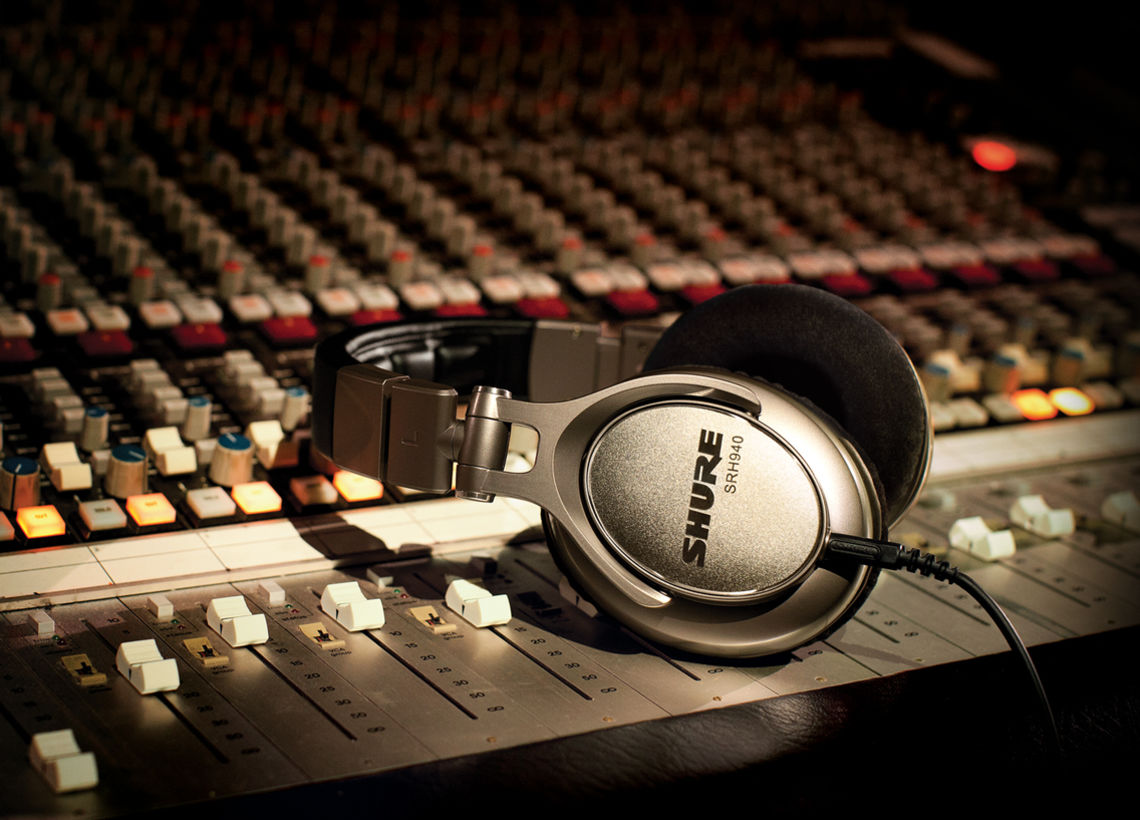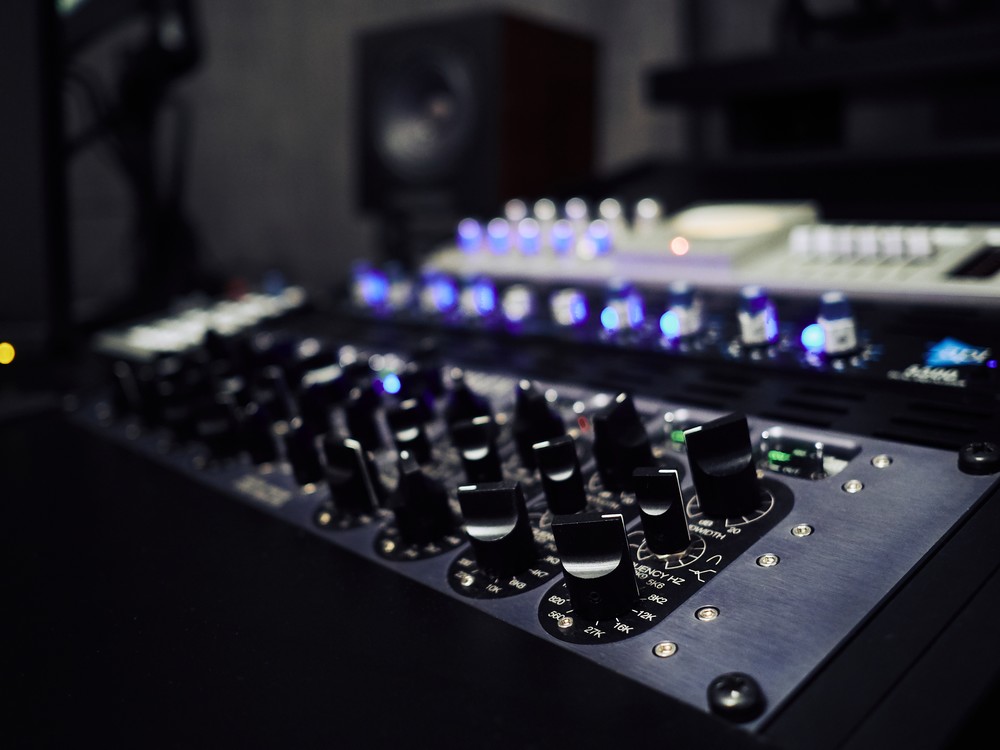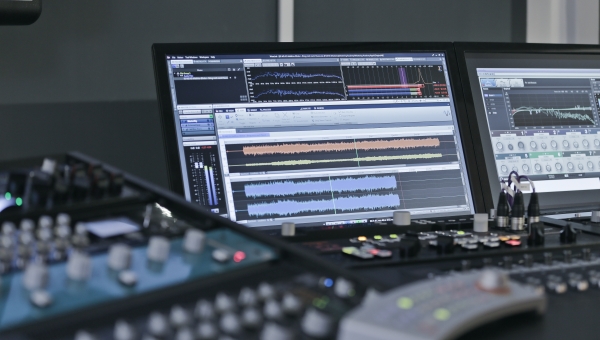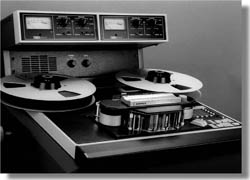How to mix music
The simple guide to mixing.
Do You Need to Contact Us?
Definition Of Mixing And Mastering
Learn how to mix
Basically, mixing is the step before mastering that involves adjusting and combining individual tracks together to form a stereo audio file after mixdown. ... This defines mixing and mastering in their simplest forms.
Check out our recent clients
Mastering is the final piece of the puzzle

What is audio mixing?
Audio mixing is the process of taking recorded tracks and blending them together. Tracks are blended using various processes such as EQ, Compression and Reverb.

The goal of mixing is to bring out the best in your multi-track recording by adjusting levels, panning, and time-based audio effects (chorus, reverb, delay). The aim is to sculpt your arrangement to make sense of all your tracks in relation to each other.
A multitrack recording is anything with more than one individual track (also referred to as stems). There's no right or wrong number of tracks. You just can't have zero. The final output of a multitrack recording is also known as the mixdown. The mixdown is the final step before mastering.
It doesn't matter if you're recording tracks with microphones and pre-amps, or using pre-recorded sample packs, learning how to mix for yourself is very important. Taking control of your artistic and creative vision will take your music to the next level. It'll make you a better producer.
Start with these basic tips. They'll get your mix as far as it can go before you seek more specific resources.
Let's get started!
Taking control of your artistic and creative vision will take your music to the next level.
Choosing your mixing software
There's tons of Digital Audio Workstations (DAW) to choose from. Which DAW is the best DAW is up to you. Here's some of the best DAWs to help you get started.
Get to know your DAW software intimately. The savvy audio mixer sticks to one DAW and knows it truly, madly, deeply. Don't cheat on your DAW. Stay true and you'll reap all the benefits.
I'll be using Pro Tools as an example but all the principles are the same no matter how you mix.
Setting up your audio mixing session
Most DAW's provide nifty templates if you're unsure of how to get started.
For example, Pro Tools includes the 'Rock' template which sets your session up with tracks for:
Drums / Bass / Organ / Guitar / 4 empty audio tracks for recording / Click Track / Pre-routed Headphone Mix / Reverb Return / Delay Return / Chorus return
Although this is a basic band mix template, there are other templates to choose from. If you don't see the template you need, just make one. Making your own template is a great step in developing your mix style. Perfect for booting up your computer and starting a mix from scratch.
Name your tracks properly
This sounds super simple, but trust me. In three months you won't be able to remember where the third shaker is if it's called 'Audio track 48.' If you record a 'lead guitar' then do yourself a favor and call it 'lead guitar' before you hit record. Poor naming adds oodles of unneeded studio time to your session.
Color code your track groups
Make ROY G BIV proud. Color code your tracks. For example, make all of your drum tracks yellow, all your vocal tracks blue, and all your guitars green. This will help with processes like bussing and keeping track of layers of your session. Take two minutes to color code right. It will save you hours of searching later.

Audio Mixing
Audio Mixing is the process of taking each element of your song and blending it to make one cohesive piece. It includes adding EQ, compression, reverb, delay, and a host of other processing to enhance the sound. Matty mixes every song in our acoustically designed room with precision monitoring from Barefoot and Cranesong. We use only the best analog hardware and digital plugins from companies such as Dangerous Music, Avalon, TK Audio, Overstayer, Bettermaker, Universal Audio, FabFilter, Slate, Waves and many more. If you're unsure if your song needs to mixing, mastering, or both, watch the video below to see the difference between mixing and mastering.

Our Mixing and Mastering Packages.
If you're working on your first mixtape or mixing a full-length album, we have an online mixing and mastering package for you. All of our packages come with the same elements;
- Analog/Digital Hybrid Mixing using Analog Summing From SSL and Neve.
- Analog Mastering using high-end conversion from Apogee and Dangerous Music, as well as EQ, Compression and Limiting from Bettermaker, Dangerous Music, SSL, and more.
- Vocal Tunning using Melodyne and Auto-tune.
- Drum Correction if needed to, help make the drums sound the best they can.
The differences between the packages come down to the number of tracks in your session. Also if you need different versions of your song, for example, an acapella and instrumental the elite package comes with those. See below for a detailed comparison.
The basic audio mixing workflow
So what're the mixing basics? Just like most processes - and especially in audio mixing - everyone has their own opinions. Right or wrong, who knows? That's fair. But there are essential mixing basics that everyone should follow.
The right mix to work with
Believe it or not, you should be mixing before you mix.
Lost? I'll explain. What are the main textures you're looking for in your track? What kind of space are you trying to create? Upfront and punchy? Or distant and reverberant? Work on bringing the most character out of your sounds while you're in the early stages of recording. Think about the big picture while recording or choosing your initial sounds.
Push the original recordings as far as you can without heavy processing. Get an early sense of where you are heading for the final mixdown. Commit to good sounds early and avoid endless tweaking later in the mixing stage.
Cut the fuss. Use a bus.
Picture a yellow school bus. Now picture it with a bunch of sounds riding it.
This is what a bus is in a mix. By sending multiple sounds to one track (the bus) you can apply the same processors to them all at once. It's very handy. Try it out on a drum bus. This allows you to process all your drum sounds as one unit. Treat them with the same reverb to give the perception that they're all in the same space. Or Set up a delay or compression bus.
Experiment with which sounds you send to what bus. I guarantee you'll get some very useful results.
HOT TIP: Commit to good sounds early and avoid endless tweaking later in the mixing stage.
Balance your levels
Time to give your mix a little haircut. A little snip here, a little trim there. Balance those levels and don't be afraid to give parts the big chop. Drop the drums for a bar, crank up that vocal for a verse. Get loose.
Get a basic balance of your levels before you go crazy with effects processing. Trim 'em so they don't clip later. Think about headroom early.
Keep a final goal in mind as you balance all of your tracks. This will give you a rough idea of how each track will eventually fit together. Processing will smooth out your rough ideas.
Balance your levels
Time to give your mix a little haircut. A little snip here, a little trim there. Balance those levels and don't be afraid to give parts the big chop. Drop the drums for a bar, crank up that vocal for a verse. Get loose.
Get a basic balance of your levels before you go crazy with effects processing. Trim 'em so they don't clip later. Think about headroom early.
Keep a final goal in mind as you balance all of your tracks. This will give you a rough idea of how each track will eventually fit together. Processing will smooth out your rough ideas.
Planning on panning
So what is panning?
Panning helps you control the width of a mix. It's the left to right breadth of the stereo field. Panning allows for sounds to be placed in your mix properly. Either to the left, or the right of the stereo center. Keep your heavier or lower sounds near the centre. This means the bass or the kick. Use them as a centring force that you can work around. If everything is panned centrally, your mix will sound flat or crowded.
Audio processing: the fun part
Now it's time to dig in and get mixing.
The meat of your mix can be broken down into three basic areas. EQ, Compression and Reverb. Although mixing has many faces, these three make up 90% of the process. They are the donkey work of mixing. Perfect these 3 areas and everything else will come naturally.
What is EQ?
Every sound is made of frequencies. Frequency is measured with Hertz (Hz). Equalizing is the art of boosting, cutting and balancing all the frequencies in a mix to get the sound you want.
You'll often hear the frequency spectrum described as the highs, mids and lows. Bass instruments have a very low-heavy, boomy sound. Their output is mostly low in the frequency spectrum. Alternately, a snare or a high-hat are often a lot more tinny, so they will typically appear in the mid or high frequencies.
Even though we can place these sounds in the general high and low categories, all sounds will have important information in both the highs and the lows. Keep this in mind while you're mixing.
The surgical audio equalizer
Use filters. They clean your frequencies up with surgical precision.
The best place to start with corrective EQ tools are high-pass and low-pass filters. High and low pass filters set limits for the signal you'd like to let through. The rest is left behind.
Remember that every track will need special attention. For instance a tom drum is going to need an entirely different EQ treatment than a Rhodes piano. Listen to learn. Figure out what adjustments you need to make with your ears.
Carving EQ
Now it's time to sculpt your mix.
Carving EQ may seem similar to corrective EQ. That's because it is. Only in this step you are correcting your frequency with the other tracks in mind. Everything will start to fit a bit better in this step. The pieces start to interact. This might sound crazy but good carving EQ sometimes means taking good parts of a frequency out.
But don't fret (no pun intended). Do it so that all your tracks will mesh better. This is going to sound even crazier, but at this stage your track may even sound bad when it's soloed. No worries. As soon as it's in the mix it'll sound great. This is because you carved your tracks down with the other tracks in mind.
Think of your song like a novel. Every track can't be the main character. There have to be some other characters to fill out the story. Carving puts your characters in order. For example, carving EQ allows you to take unnecessary low-end off your keys so that it doesn't mask the kick and bass. You might have two elements battling each other in the same frequency. Like vocals and synth. Carve a space for each by cutting the frequencies on one while boosting the same range on the other.

Creative
This is the final, and most creative stage in your equalizer journey. It's the part where you get to make your track into exactly what you want to hear. Normally I'd call this step enhancement, but it doesn't start with a C so... Give your tracks personality. Dress them up. There's an equalizer for just about everything.
Now is the time to make your vocals jump out of the speaker. Or make your kick bash and your snare explode. Or make those synth lines extra heartbreaking.
Try several different EQ plugins. Put 2 or 3 different EQs in a row. Some EQs will be good at one thing, and not another. So get the best of everything by stringing them together. There is no wrong way to do it. The only thing you can do wrong is hold yourself back from experimenting.
What are dynamics?
Dynamics refer to the space between the loudest parts of a sound to the quietest part. The space between each part is typically referred to as the dynamic range. This definition can be applied to an entire song, or to a specific sound.
Dynamic sounds have a wide range between the quietest part of the sound and the loudest. For example, picture a snare hit. It has a very sudden peak that doesn't last long. This means it has a wide dynamic range. A real flash in the pan. Compare that to an organ note. It stays the same level from the time it begins to the time the key is released. This means it's a less dynamic sound.
Dynamics also exist within an entire performance. An obvious example is a singer singing quietly in the verse, and then belting it out in the chorus. The range between the quietest and loudest parts can often be as much as 20dB, which is a lot. especially when you're trying to balance it with a bunch of other elements. Like that very un-dynamic organ note. These dynamic swings can make it difficult to make everything fit together in a mix without imposing some kind of control on them.
This is where audio compression comes in.
What is compression?
Audio compression is the process of taming the dynamic range. This is done with a compressor that sets specific limits on how much of a frequency is let through. They boost the quieter portions and lower the louder parts, providing a more consistent and balanced overall sound.
How much a compressor does is determined by the compressor's Ratio. Higher ratios affect the dynamic range more.
But why do it? Isn't dynamic range a good thing?
It's true, dynamics are good. But remember that you're trying to get a consistent level in the mix. If something is too loud it'll stand out and be awkward. If it's too quiet it'll get lost in the couch cushions of your mix. Finding a good balance of compression is an art that requires listening and learning.
Does this sound similar to adjusting the faders in your DAW? It should. That's basically what a compressor is doing, but automatically.
But be careful not to get carried away. Applying too much compression is a danger zone. Using only compression to try and balance levels in a mix will lead to a lifeless, punchless, and fatiguing mix. Yucky.
Use compression in conjunction with volume (gain) to get the best results.
What is reverb?
Reverb is the reflection of sound. All sound is a reverberation of some kind. The coolest part about mixing is that YOU get to control it. Approach reverb with two goals in mind.
The artificial reverb effect
Anything goes when you're using reverb as an effect. This is where your own unique flare gets injected into the mix. Artificial reverb lets you do all the things you can't do in real life.
Reverb controls can be intimidating. No sweat. Just use the presets until you find something you like. Then you can tweak it at your leisure. It's the taster's choice.
Remember that reverb bus we setup earlier? EQ it. Rolling off some of the highs and lows will make sure it's not drowning out other elements. You don't wanna burry that hot maraca just cause your reverb bus is maxed out. Experiment with putting the EQ before the reverb. This means you're EQing what's coming into the reverb. Or, put it after the reverb and EQ what's coming out. Anything goes. Both approaches will give you interesting results.
Reverb in real life
You don't have a church handy, but you want your song to sound like it's in one? No problem. Just fake it with reverb.
Harness the power of reverb to create a real acoustic space for your sound. Do it to add some three-dimensionality to your mix. It doesn't matter if you tracked your instruments in isolation. Be a sound magician and make it sound like they're all playing together in the same room.
But be aware that this is a more subtle technique than using reverb as an effect. It's a perfect time to use that pro mixing touch you've developed since you started reading this article. Start by using the 'Small Room' or 'Ambiance' presets on your reverb (or the most similar preset on your DAW of choice).
HOT TIP: Pay close attention to the balance between early and late reflections. Always be fiddling. Adjust them to understand what they do best for your sound.
How to use Reverb
JAY FLY MASTERING TIPS
The big picture
Remember that all your processing should be done with the big picture in mind. Have a distinct sense of where you're going with your track and reference it often. Make your mixdown optimal for the post-mix mastering step. The only way to get the perfect song is to mix with a sound in mind.
Mix references: all audio mixers should use them
So your mix is coming along smoothly by this point. But there are always those looming questions... How do you know if your mix is up to snuff? Does it sound like other good songs? Is everything sitting together properly? Use a Mix Reference. There's a couple ways to do this:
Do you love the Rolling Stones? Throw Street Fighting Man into your session as track one and reference it while you go. Is your kick sitting like theirs? Is your guitar cutting like Keith's?
Export and master your track often during the mix process. Take notes on what's sounding right or wrong. Go back to your mix and fix.
There's a saying that the last 10% of the job is actually 90% of the work. Use LANDR to avoid this creative block. The only way you'll know you're done is to hear it mastered.
Finding the right mix through repetition
All of these processes aren't one stop shops. Go back relentlessly and make small adjustments over and over. Everything is going to fall apart before it all comes together. Mixing is a lather, rinse, repeat process. Keep at it until you have the perfect mix. A good mix will often take several versions and multiple sessions before it's just right.
Go against the trusted mixing techniques
Now that you've learned all the 'rules' of mixing, break all of them. Well maybe not ALL of them. But good mixing is always creative mixing. Take chances with your mix. Mixing isn't a textbook process you can learn overnight. It's equal parts know-how, instincts, and risk taking. It's one of the most creative steps in your process. Don't squander it by following some dry, stale guide that says there's only one way to do things. If you wanna put a flanger on your oboe, then put a flanger on your oboe!


